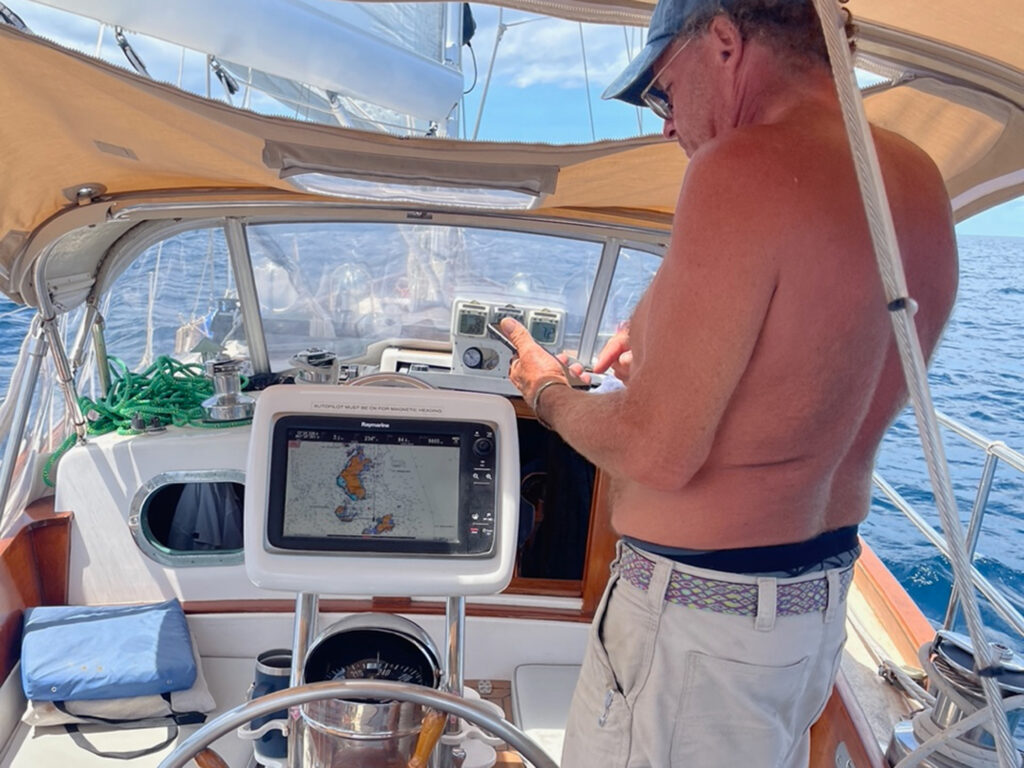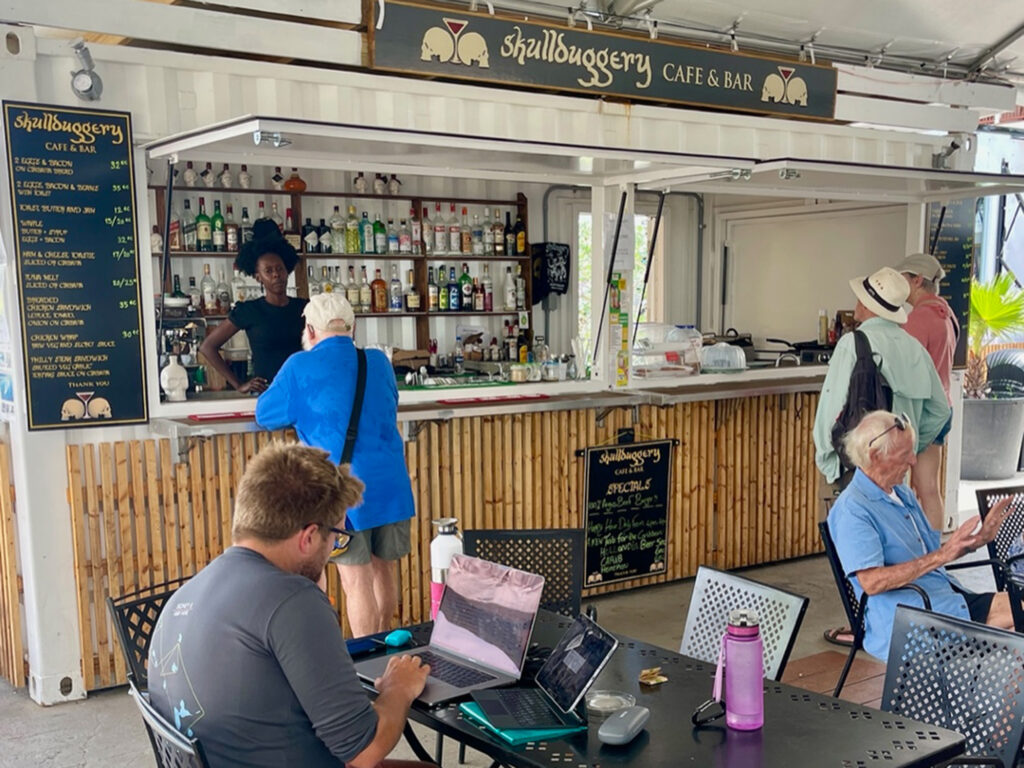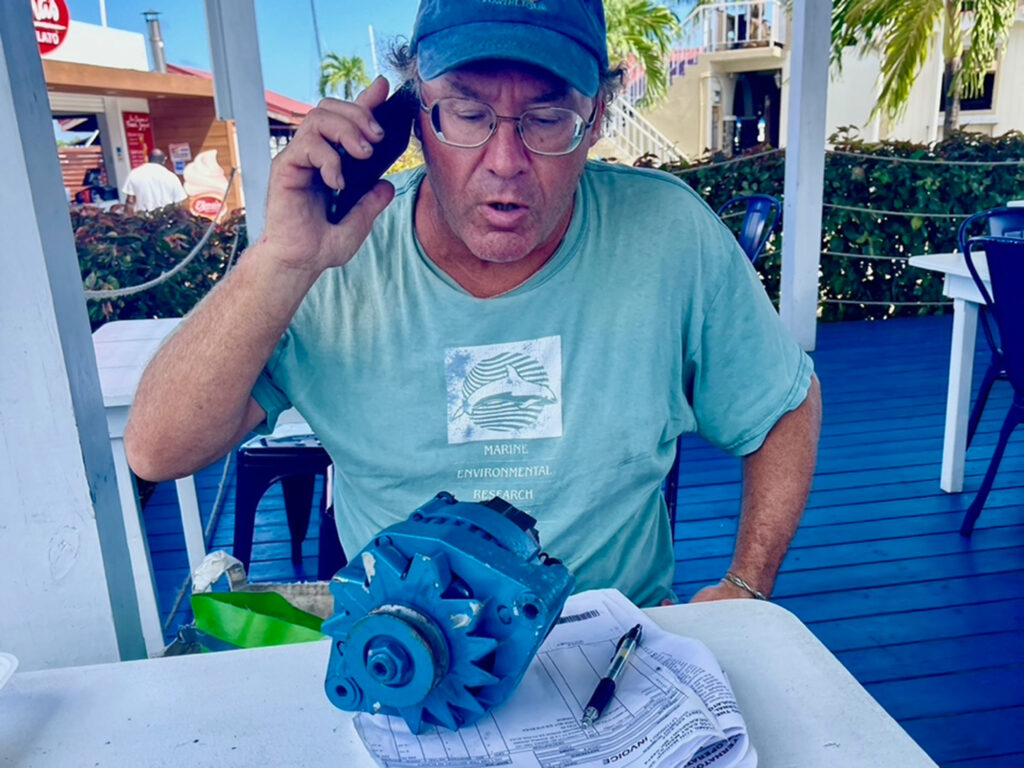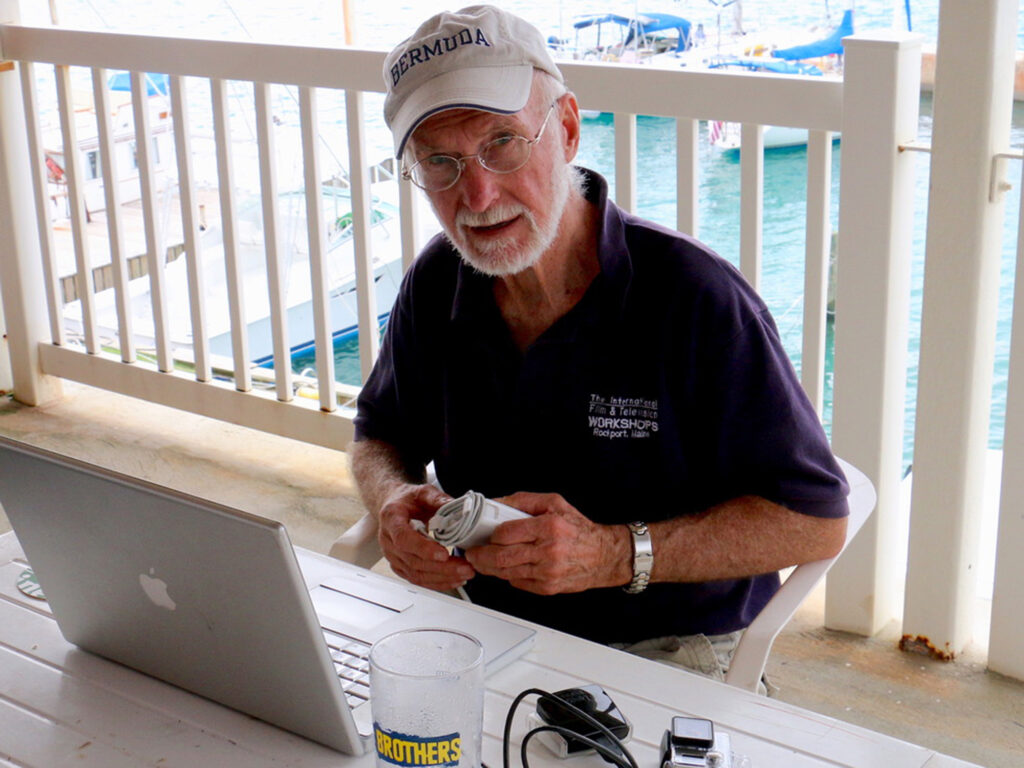
If you’ve spent any time in the West Indies on a boat, then you may have already figured out how to connect your phone to the Internet. Understanding phone service and digital roaming is paramount. Here’s what I recently discovered.
You can always go ashore and, for the price of a beer or an iced tea, connect using the bar’s Wi-Fi. And all along the island chain, from Grenada to the US and British Virgin Islands, cell phone service is available, even a few miles offshore.
In March, I flew to the islands to meet a friend on his boat in Bequia. As my plane touched down on St. Vincent, my iPhone lit up: “Welcome to St. Vincent and the Grenadians. You are now connected to Spectrum Mobile. Outgoing calls are 12 cents a minute; 25 cents for incoming calls; texts are free; and roaming data is 10 cents a megabyte.”
It wasn’t always this easy to connect. In the early ’80s, I’d call my office in Maine from a pay phone nailed to a palm tree near the taxi stand at the Cruz Bay ferry terminal on St. John. In 1983, AOL came online. With a bag phone—the one with an antenna that you placed on your car roof or cabin top—you could connect to AT&T and AOL while cruising in the USVI. Over in the BVI, rates were outrageous, but if you anchored off the caves or in Kelly’s Cove on Norman Island, you could hit the AT&T tower on top of St. John, and you were in.

It’s been a scramble ever since to find inexpensive access to Wi-Fi while living on a boat in the islands. In 2010, we were boat-schooling our two kids on Searcher, our Bowman 57 ketch. While in Grenada, we learned of a Wi-Fi hot spot in English Harbour, Antigua. For $50 a month, we had Wi-Fi on board with an antenna on the aft deck, a booster and a router below. We could use Skype to make calls.
It’s much easier to make calls today, but the costs can still add up. After a week on board in Bequia, I checked in with Spectrum at home and learned that I’d already run up a $30 bill. The Digicel store in the middle of Port Elizabeth had a sale on: I could get a monthly plan with 25 GB for $42. It also had free texting and an ample number of free phone calls.
However, I’d have to buy a new phone or replace the SIM card in my phone, with a new one ($19) that had a new phone number, thereby losing access to my contacts and email. And, service would only be good from St. Vincent and the Grenadines south to Union Island, but not in Grenada or the islands to the north.

That would not be ideal when we left to go sailing for a few months. I emailed a friend who’s been skippering a charter boat in the islands for 30 years. He had a plan for unlimited Internet all over the Caribbean, and unlimited calls in the Caribbean and toward Europe— but not to the US or Canada. To get that plan, I’d have to visit one of the French Islands to buy a new phone, or switch SIM cards.
Still not ideal. I noticed that Richard Thomas, the owner of the boat I was aboard, was on his phone all the time. I asked about his plan.
“AT&T,” he replied. “It’s $10 a day for unlimited phone calls, in and out, data and texting.”
“That’s costing you $300 a month!” I shrieked.
“No. It’s $10 a day for the first 10 days, then free for the rest of the month,” he said.
A $100 maximum? That was less than what I pay at home in Maine for Internet and phone service. But, there was no AT&T store handy, so I muddled through with what I had. Each time we neared an island, my phone lit up with a welcome from Spectrum and the rates for that new island.

Richard discovered that he had a spare cell phone onboard, one he’d bought in the French Islands earlier in the year. “All you need to do is reactivate it and top it up,” he told me.
When we reached Rodney Bay on St. Lucia two weeks later, I went looking for the Digicel store. “I want to use this French phone as a hot spot,” I told the clerk. “That way, I can still use my iPhone to access the Internet.”
“Yes, that will work,” he said. “You’ll need a new SIM card.”
It would cost me $15. For another $40, I could get a plan with 25 GB of data and free phone and text, for a month.
“Will it cover the islands north to Antigua?” I asked.
“Yes, but not the French Islands,” he said.
I could live with that. I bought in. At the end of the few weeks of sailing, I had spent $60 for the plan but used only 250 megabytes of data.
When I got back home, my Spectrum bill for the two months in the Caribbean was only $60.

The Bottom Line
Next time I’m off to the islands, I’ll stick with my Spectrum International plan. If I need a lot of Internet access, I’ll go ashore and spend the morning at a cafe with free Wi-Fi.
Check your phone’s international plan before you depart, and if you plan to work offshore or in remote locations, then consider investing in Starlink. If your only requirements are accessing PredictWind and the Windy weather app, then Iridium GO! is a more cost-effective option.
Or, you can always throw the phone over the side and go off the grid entirely. Which, some people tell me, is also quite nice.








